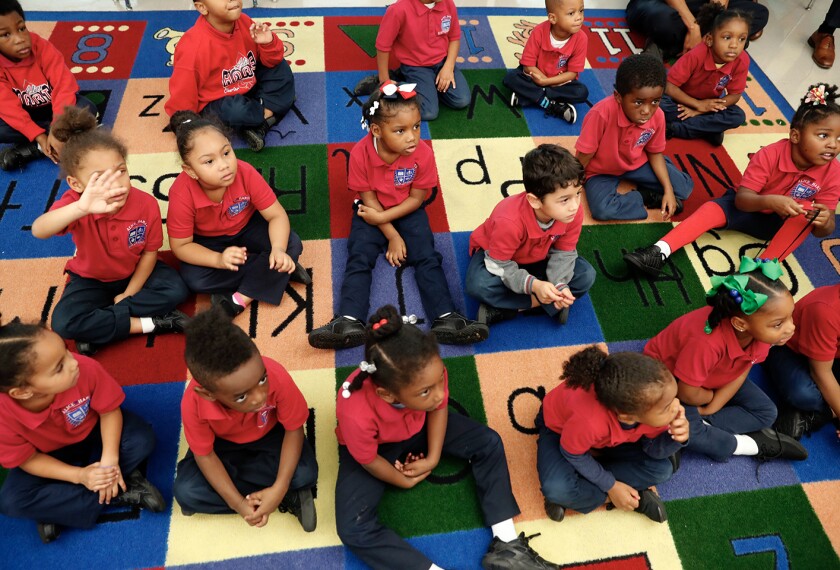For More Information |
| The study is available at http://newfederalism.urban. org/pdf/occa41.pdf. (Requires Adobe’s Acrobat Reader.) |
An estimated 4 million children between the ages of 6 and 12 are routinely caring for themselves before and after school while their parents are working, a new report shows.
But the lack of adult supervision is of more concern for some children than it is for others—namely, younger children and those from low-income families, according to the study being released this week by the Urban Institute and Child Trends, two Washington-based research organizations.
For those groups of children, “research shows that regularly leaving a child unsupervised can contribute to negative child outcomes,” the report states. Those children might also benefit the most from organized before- and after-school programs, said Jeffrey Capizzano, a research associate at the Urban Institute and one of the study’s authors.
Based on the 44,000-household National Survey of America’s Families conducted in 1997, the report examines child-care patterns for 6- to 9- year-olds separately from those of 10- to 12-year-olds.
“These are choices that parents make based on the maturity of the child,” Mr. Capizzano said.
While 7 percent of 6-year-olds care for themselves for a portion of their after-school hours, the percentage rises as children get older, the study shows. Among 12-year-olds, 44 percent are spending time in self-care, which includes supervision by a sibling under 13.
The percentages also look different when parents are asked if their children spend any time unsupervised, as opposed to whether this is their primary child-care arrangement.
For the younger group of children, only 5 percent have self-care as the primary arrangement. But 10 percent spend at least some time on their own. Of that group, nearly two-thirds spend one to four hours each week by themselves or in the care of a sibling younger than 13.
Among older children, self-care is the primary arrangement for almost a fourth of this age group, but the average amount of time they spend alone each week—about six hours—is not significantly more than the amount younger children spend alone.
Differences Among States
The report, “Child Care Patterns of School-Age Children With Employed Mothers,” also finds that both younger and older children from higher-income families are slightly more likely to spend time alone than children from lower-income families. “Children from higher-income families are more likely to live in neighborhoods that parents would consider safe,” the report says.
As with a similar report on children younger than 5 that the institute released in March, the researchers found that after-school child-care arrangements vary widely across states. The new report, which includes data on child-care patterns in 12 states, shows that the percentage of 6- to 9-year- olds attending before- and after-school programs ranges from 14 percent in Mississippi and Washington to 31 percent in Florida.
“A lot of it has to do with the demographic patterns of that state,” Mr. Capizzano said.




